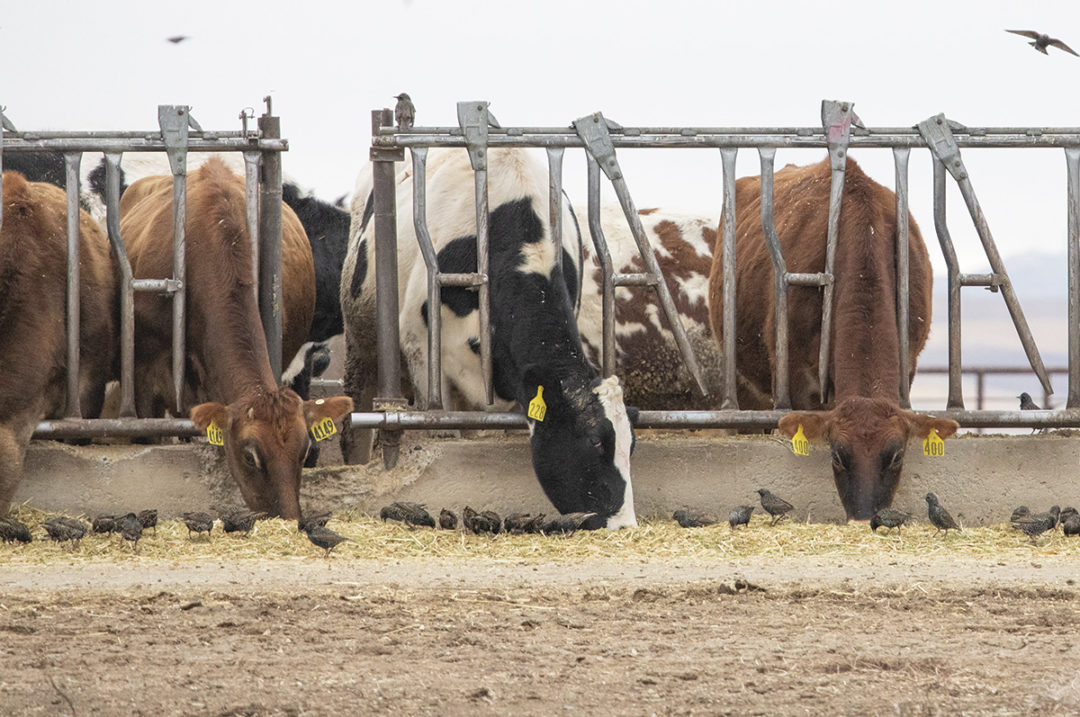A multistate, multiagency effort was underway to identify an illness that is affecting primarily older midlactation dairy cows in Texas, Kansas and New Mexico.
Today, the USDA released that unpasteurized, clinical samples of milk from sick cattle collected from two dairy farms in Kansas and one in Texas, as well as an oropharyngeal swab from another dairy in Texas, have tested positive for highly pathogenic avian influenza (HPAI).
Farms in New Mexico have also reported animals with similar symptoms to those observed in the Kansas and Texas herds.
Testing for a multitude of options has been ongoing since mid-March. When it was revealed the farms also reported finding deceased wild birds on their properties, additional testing was initiated on Friday and over the weekend.
“Based on findings from Texas, the detections appear to have been introduced by wild birds,” reads the announcement from the USDA Animal and Plant Health Inspection Service (APHIS).
Detections of avian influenza in birds, including chickens, are common in the U.S. in the spring and fall due to wild birds spreading the virus as they migrate to and from their seasonal homes.
While common in birds, avian influenza has had limited detection in mammals in the U.S., including skunks, mountain lions, raccoons and harbor seals.
Five days ago, avian influenza was first detected in livestock, in a baby goat on a Minnesota farm where an outbreak had recently been detected in poultry.
While additional testing is ongoing, the USDA confirmed the current risk to the public remains low. There is no threat to human health and commercial milk, dairy products and meat remain safe to consume.
In a joint statement from the National Milk Producers Federation (NMPF), the International Dairy Foods Association (IDFA), the U.S. Dairy Export Council (USDEC) and Dairy Management Inc. (DMI), it was noted that pasteurization kills harmful microbes and pathogens in milk, including the influenza virus.
The statement continued, “Routine testing and well-established protocols for U.S. dairy will continue to ensure that only safe milk enters the food supply. In keeping with the federal Grade ‘A’ Pasteurized Milk Ordinance (PMO), milk from sick cows must be collected separately and is not allowed to enter the food supply chain.”
The Meat Institute reports dairy cows comprise 6.8% of total beef production in the U.S.
“According to the Centers for Disease Control and Prevention (CDC) and USDA food safety experts, properly prepared beef is safe to eat,” said Meat Institute President and CEO Julie Anna Potts. “HPAI cannot be transmitted to humans by eating meat or poultry products.”
“There is no threat to the public and there will be no supply shortages,” assured Texas Agriculture Commissioner Sid Miller.
Texas ranks fourth in milk production nationwide, while New Mexico is ninth and Kansas 17th. Combined, they produced 27.4 billion pounds of milk in 2023, 12% of the nation’s total.
Cattle impacted by avian influenza exhibit flu-like symptoms including fever, abnormal feces, thick and discolored milk, decreased feed consumption and rumination, and a sharp reduction in milk production averaging between 10-30 pounds per cow throughout the herd.
Economic impacts to dairies are ongoing, and the Texas Department of Agriculture reports herds that are greatly impacted may lose up to 40% of their milk production for seven to 10 days until symptoms subside.
On average, about 10% of each affected herd appears to be impacted, with little to no associated mortality reported among the animals.
“Unlike affected poultry, I foresee there will be no need to depopulate dairy herds,” Miller said.
According to dairy farmers and veterinarians reporting on affected herds, most affected cows recover within two to three weeks.
Mammals, including cows, do not spread avian influenza; it requires birds as the vector of transmission.
Enhanced biosecurity measures are vital for dairy facilities nationwide to mitigate further spread.
Dairies are strongly advised to use all standard biosecurity measures, including restricting access to essential personnel only and disinfecting all vehicles entering and leaving premises.
Additionally, it is important to clean and disinfect all livestock watering devices and isolate drinking water where it might be contaminated by wild birds.
More information on biosecurity measures for avian inflenza can be found on the USDA APHIS website.
The FARM Program also offers several biosecurity resources for dairy producers.
“We need to be vigilant and making sure that at the individual farm level, we’re doing the best we can do to increase biosecurity and keep the health of the herd as safe as possible,” says Jamie Jonker, NMPF chief science officer.
“We’re advising farmers if they see things that are out of the ordinary on their farm, something that’s different and presenting itself like what we see being reported out of the affected herds for this animal health issue, to contact their veterinarians,” Jonker adds.
Veterinarians are then encouraged to contact their state veterinarian to make sure they get the right samples to be tested at a diagnostic laboratory for confirmation of the illness.







